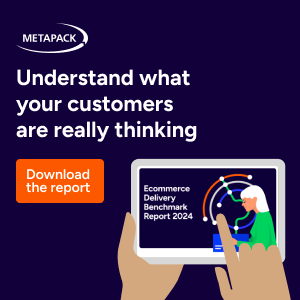German retailer Ernsting’s family is to deploy a new optimised markdown process across 1,800 stores following a successful five-month pilot project.
Starting in April 2018, the family-focused retailer – whose outlets are spread across both Germany and Austria – will automate the entire sales cycle of each product using Blue Yonder’s price optimisation technology. It will also use the solution for its online clothing collection.
The AI-based system automatically delivers the best price reduction for each individual product, by size and by colour. It also considers the sales goals of each store in relation to demand and stock levels when setting prices.
The retailer had been faced with the challenge of the short lifecycle and seasonality of its range of products, with each of its 1,800 stores receiving products from the 12-monthly collections every two days. This was resulting in a high ‘push share’ at Ernsting’s family, so that the products in each store – which average 1,700 square feet – had to sell as fast as possible. During the five-month pilot phase, the new markdown process enabled the sale of selected items within a defined period of days.
The pilot project involved 50 test shops in Germany and included 50 clothing items from the women’s and children’s collections. The technology analysed an extensive number of indicators, including stock levels, sales, promotions, climate and weather conditions, as well as the product information for each article. In a direct comparison with a control group of 50 shops, the system resulted in faster sales, making more room on the shelves for new items.
Claudia Metz, head of merchandise planning and allocation at Ernsting’s family, said: “The right price at the right time at the right place – this is what we’ve succeeded to do with Blue Yonder. The AI-based solution delivered us optimised prices that matched our sales strategy.”
Uwe Weiss, Blue Yonder’s CEO, added: “By considering store capacity and the cost of each price change, we were also able to noticeably increase sales quotas and margins by conducting a daily data analysis to set automated pricing decisions. This includes whether certain sizes or colours of certain items have better or worse sales numbers. During the pilot, price reductions happened more frequently, but the reduction was lower than average.”
Latest News
-
Amazon to double sales of ‘Just Walk Out’ tech to third-party retailers
-
bp rolls out body cams to combat crime
-
Shein reportedly interested in acquiring Topshop from beleaguered Asos
-
Cost-of-living still ‘biggest’ concern for consumers, finds HSBC
-
Retail Systems' 2024 Payments Awards are now open for entry
-
Consumers shouldn’t be ‘misled’ by 12-month food inflation drop, say retail experts
The Very Group
Smarter merchandise planning across the retail value chain
In this webinar, Matt Hopkins, Head of Retail Solutions, Board, Catherine Tooke, SVP Product & Planning, Sweaty Betty, and Subir Gupta, Managing Principal, Thought Provoking Consulting join Retail Systems Editor Jonathan Easton to discuss the findings of the recent Retail Systems report The Merchandise Planning Challenge: How are retailers harnessing technology to optimise planning and retain customers? and examine the innovations that are improving retail planning.
© 2019 Perspective Publishing Privacy & Cookies















Recent Stories